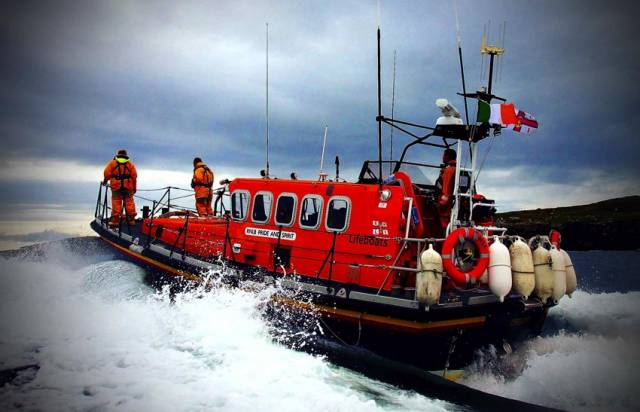Clifden RNLI were tasked by the Irish Coast Guard on Saturday afternoon (8 June) to a distress signal received from a personal locator beacon (PLB) registered to a 50-foot yacht that had been activated some 13 miles west of Slyne Head.
Clifden’s all-weather and Atlantic 85 lifeboats both launched along with the Aran Islands lifeboat and the Shannon-based coastguard helicopter Rescue 115.
En route the lifeboats received updated information that the lone sailor had become trapped in his generator room. The boat had rolled hard to her beam and the door slammed shut.
He had already spent approximately two hours trying to open it and was very worried as the boat was on autopilot so he activated his PLB to raise the alarm.
Shortly afterwards he managed to free himself and immediately called Clifden Coastguard to inform them that he was okay, and that he had activated his PLB as at the time he had been in grave and imminent danger as he was not in control of his boat.
The lifeboats were requested to proceed to the casualty’s location and make verbal/visual contact with the skipper. He confirmed that he had been in a perilous position when he was trapped and the boat was indeed adrift and heading towards hazardous shoreline.
He was very relieved to learn that the rescue services were coming to his aid and he then made his own way into Clifden Bay.
Coxswain James Mullen said after the launch: “This really showed the value and importance of wearing a PLB as this skipper was totally trapped aboard his own boat and in grave danger.
“Luckily, his decision to carry this vital piece of safety equipment and then to activate his PLB meant that we were able to go to his aid and thankfully a much worse scenario was avoided.”































































